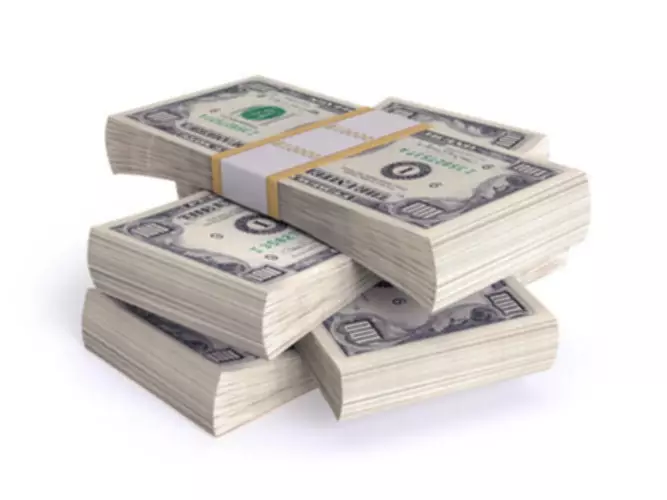Content

In the Declining Balance method, LN calculates each year’s total depreciation by applying a constant percentage to the asset’s net book value. The declining balance methods allocate the largest portion of an asset’s cost to the early years of its useful life. Straight line depreciation is a method of depreciating fixed assets, evenly spreading the asset’s costs over its useful life. The asset’s value is reduced on an annual basis until it reaches its estimated salvage value at the end of its useful life.
- For example, when a car is no longer drivable, the parts retain some value for scrap.
- The total cost of the furniture and fixtures, including tax and delivery, was $9,000.
- After the machine’s useful life is over, the asset’s carrying value will be only $ 2000.
- For freelancers and SMEs in the UK & Ireland, Debitoor adheres to all UK & Irish invoicing and accounting requirements and is approved by UK & Irish accountants.
- In this method the production or initial costs of an asset are evenly spread during the course of its useful life span.
If you’re unsure or unable to arrive at an estimated useful life for a newly acquired asset, one option is to use the lives given in IRS Publication 946. While these lives are required to be used for income tax purposes, they aren’t required for bookkeeping. Now, $ 1000 will be charged to the income statement as a depreciation expense for eight straight years. Although all the amount is paid for the machine at the time of purchase, the expense is charged over time. We can also calculate the depreciation rate, given the annual depreciation amount and the total depreciation amount, which is the annual depreciation amount/total depreciation amount.
How does straight-line depreciation factor into my accounting?
Straight line depreciation is the default method used to recognize the carrying amount of a fixed asset evenly over its useful life. It is employed when there is no particular pattern to the manner in which an asset is to be utilized over time.
We record $15,900 per year, which after seven years will be $111,300. We’ll record the final $700 in year eight to arrive at the total cost of $112,000. The small amount of depreciation in year eight is due to the group life being slightly longer than seven years in Step 3. Let’s assume that we acquired a fixed asset for $50,000 with an estimated salvage value of $5,000 at the end of its 10-year useful life. Mary Girsch-Bock is the expert on accounting software and payroll software for The Ascent. Sally recently furnished her new office, purchasing desks, lamps, and tables. The total cost of the furniture and fixtures, including tax and delivery, was $9,000.
Book Value or Carrying Value of Assets
The cost basis includes the price you paid for the asset itself, but it also includes extra costs you paid such as sales tax, shipping and handling charges, and installation costs. The salvage value is what you expect the asset to be worth at the end of its useful life. In the absence of any information on entity’s policy, depreciation is usually calculated only for the period https://quickbooks-payroll.org/ asset was in use and adjusting the expense by the fraction of period if necessary. However, entities may have specific policies regarding mid-year acquisition or disposal of asset. Sometimes entities have a policy to charge full depreciation in the year of acquisition even if it wasn’t available for whole year but no depreciation is charged in the year of disposal.
She has expertise in finance, investing, real estate, and world history. Kirsten is also the founder and director of Your Best Edit; find her on LinkedIn and Facebook. But, you don’t have to do it yourself, especially if you run a large company with many assets that are liable to depreciation. You can always hire a professional accountant solution to handle this part of your business. The vehicle is estimated to have a useful life of 5 years and an estimated salvage of $15,000. According to straight line depreciation, the company machinery will depreciate $500 every year. A business purchased some essential operational machinery for $7,000.
Step 5: Multiply your depreciation rate by the asset’s depreciable cost
Whereas the depreciable base is the purchase price minus the salvage value. Depreciation continues until the asset value declines to its salvage value. Regardless of the depreciation method used, the total depreciation expense recognized over the life of any asset will be equal. However, the rate at which the depreciation is recognized over the life of the asset is dictated by the depreciation method chosen.
It’s calculated by subtracting cost of goods sold from sales revenue. Here’s how you can use gross profit, and the gross profit margin, to measure your business’s production efficiency.
Salvage Value Of The AssetSalvage value or scrap value is the estimated value of an asset after its useful life is over. For example, if a company’s machinery has a 5-year life and is only valued $5000 at the end of that time, the salvage straight line depreciation formula value is $5000. It is easiest to use a standard useful life for each class of assets. Determine the initial cost of the asset that has been recognized as a fixed asset. Should you use straight-line depreciation or an alternative method?
- Here, we are simply taking an average of the useful value of the asset over its useful life.
- Note that the straight depreciation calculations should always start with 1.
- Cash And Cash EquivalentsCash and Cash Equivalents are assets that are short-term and highly liquid investments that can be readily converted into cash and have a low risk of price fluctuation.
- Switching to real estate, imagine you buy a rental property for $150,000.
Complete Embroker’s online application and contact one of our licensed insurance professionals to obtain advice for your specific business insurance needs. With straight-line depreciation, you must assign a “salvage value” to the asset you are depreciating. The salvage value is how much you expect an asset to be worth after its “useful life”. Hence, let’s use the group method to depreciate them as if they’re a single asset. Eric is a staff writer at Fit Small Business and CPA focusing on accounting content. He spends most of his time researching and studying to give the best answer to everyone. Contra AccountContra Account is an opposite entry passed to offset its related original account balances in the ledger.
Straight-line depreciation in Debitoor
However, it costs another $100 to ship the copier to the office. In our example, the title transfers, which means at the end of the lease term the lessee will own the asset and continue depreciating it. However, the useful life of the equipment in this example equals the lease term so at the end of the lease, the asset will be depreciated to $0. Now, let’s consider a full example of a finance lease to illustrate straight-line depreciation expense.

Accumulated DepreciationThe accumulated depreciation of an asset is the amount of cumulative depreciation charged on the asset from its purchase date until the reporting date. It is a contra-account, the difference between the asset’s purchase price and its carrying value on the balance sheet. Its assets include Land, building, machinery, and equipment; all are reported at costs. Things wear out at different rates, which calls for different methods of depreciation, like the double declining balance method, the sum of years method, or the unit-of-production method.
